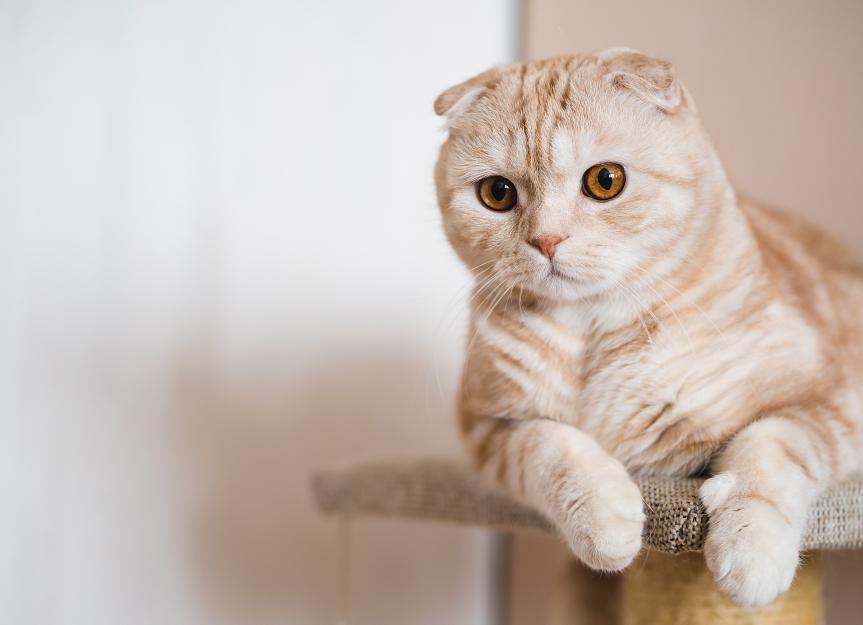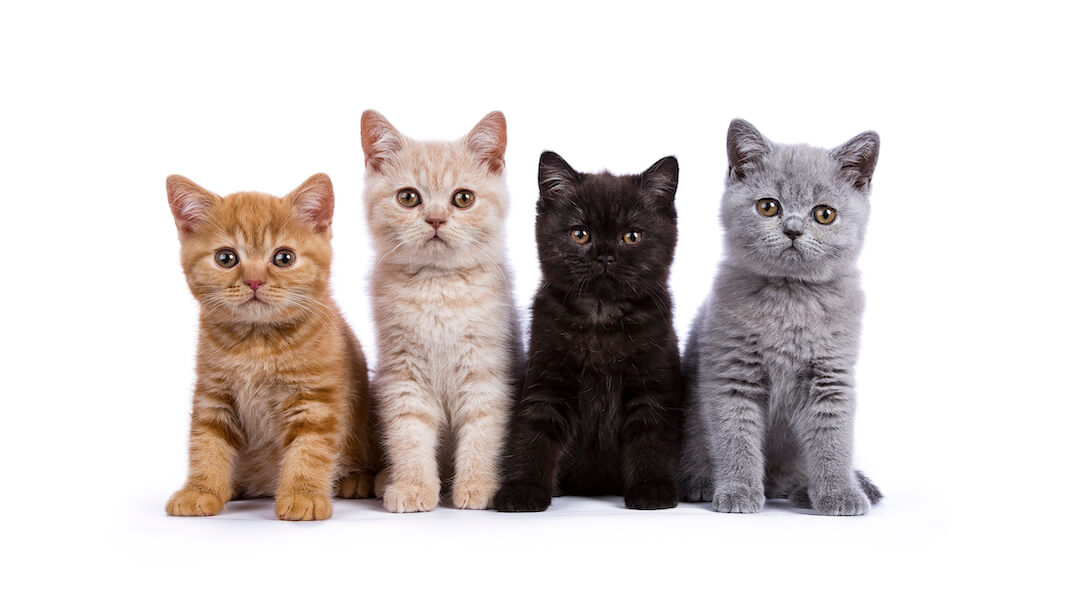| For some cats breeds, their history of development goes back many centries; their origins are lost in unrecorded times.These are the breeds that the cat facny refers to as "natural."This is somewhat of an exaggeration because prior to the establishment of organized cats. | century to create a pool of breeds. For them other breeds have been develope natural mutations that spontaneously occur in all animals time to time.The Scottish Fold is one such. |


Some mutations affect the color of an animal, some the hair length or other anatomical feature. Examples in cats are the Taillessness in the Manx and Japanese Bobtail, long hair in the Persian and many other breeds, lack of hair in the Sphinx, outwards ear curling in the American Curl, and such colorssuch as blue, lilac, and others,𝚠𝚑𝚒𝚌𝚑 𝚊𝚛𝚎 𝚍𝚒𝚕𝚞𝚝𝚒𝚘𝚗𝚜 𝚘𝚏 𝚗𝚘𝚛𝚖𝚊𝚕 𝚠𝚒𝚍𝚎-𝚝𝚢𝚙𝚎 𝚌𝚘𝚕𝚘𝚛. 𝚃𝚑𝚎 𝚙𝚊𝚝𝚝𝚎𝚛𝚗 𝚘𝚏 𝚝𝚑𝚎 𝚂𝚒𝚊𝚖𝚎𝚜𝚎, 𝚝𝚘𝚐𝚎𝚝𝚑𝚎𝚛 𝚠𝚒𝚝𝚑 𝚟𝚊𝚛𝚒𝚘𝚞𝚜 𝚌𝚘𝚕𝚘𝚛 𝚜𝚑𝚊𝚍𝚒𝚗𝚐 𝚙𝚊𝚝𝚝𝚎𝚛𝚗, 𝚊𝚛𝚎 𝚏𝚞𝚛𝚝𝚑𝚎𝚛 𝚖𝚞𝚝𝚊𝚝𝚒𝚘𝚗𝚜 𝚝𝚑𝚊𝚝 𝚑𝚊𝚟𝚎 𝚋𝚎𝚎𝚗 𝚛𝚎𝚝𝚊𝚒𝚗𝚎𝚍 𝚝𝚘 𝚠𝚒𝚍𝚎𝚗 𝚝𝚑𝚎 𝚌𝚑𝚘𝚒𝚌𝚎 𝚘𝚏 𝚌𝚘𝚕𝚘𝚛𝚜 𝚊𝚗𝚍 𝚏𝚎𝚊𝚝𝚞𝚛𝚎𝚜 𝚝𝚘 𝚌𝚛𝚎𝚊𝚝𝚎 𝚊𝚗 𝚎𝚟𝚎𝚛-𝚐𝚛𝚘𝚠𝚒𝚗𝚐 𝚕𝚒𝚜𝚝 𝚘𝚏 𝚋𝚛𝚎𝚎𝚍𝚜. 𝙸𝚗 𝚝𝚑𝚎 𝚂𝚌𝚘𝚝𝚝𝚒𝚜𝚑 𝙵𝚘𝚕𝚍, 𝚝𝚑𝚎 𝚖𝚞𝚝𝚊𝚝𝚒𝚘𝚗 𝚊𝚏𝚏𝚎𝚌𝚝𝚜 𝚝𝚑𝚎 𝚎𝚊𝚛𝚜, 𝚌𝚑𝚊𝚜𝚒𝚗𝚐 𝚝𝚑𝚎 𝚝𝚒𝚙𝚝𝚘 𝚏𝚘𝚕𝚍 𝚍𝚘𝚠𝚗 𝚒𝚗 𝚊 𝚜𝚎𝚖𝚒-𝚙𝚎𝚗𝚍𝚞𝚕𝚘𝚞𝚜 𝚖𝚊𝚗𝚗𝚎𝚛. 𝚄𝚗𝚏𝚘𝚛𝚝𝚞𝚗𝚊𝚝𝚎𝚕𝚢, 𝚝𝚘 𝚝𝚑𝚎 𝚌𝚘𝚖𝚙𝚕𝚎𝚝𝚎 𝚢𝚘𝚞𝚛 𝚞𝚗𝚍𝚎𝚛𝚜𝚝𝚊𝚗𝚍𝚒𝚗𝚐 𝚘𝚏 𝚖𝚞𝚝𝚊𝚝𝚒𝚘𝚗𝚜
Scottish folds are known for their easygoing temperament and general sociability. They usually get along great with cat-friendly dogs and other cats and adapt well to multi-pet households. Children who are old enough to respect this cat and not handle it roughly will make fast friends with the Scottish fold, whose affectionate personality is both comforting and endearing to people of all ages. The Scottish fold doesn't need a lot of active engagement or strenuous exercise to be happy; it will thrive in a household where casual play is balanced with plenty of quiet cuddle time. Scottish fold kittens are not born with folded ears. The ears of the kittens that carry the gene begin folding somewhere around 21 days of age, starting with the outer edge of the ear near the base. The fold gene is an incomplete autosomal dominant gene that affects the development of cartilage and bone throughout the cat's body. A cat that has two copies of the gene is said to be homozygous. Cats that have two copies of the gene that produces folded ears can have severe health problems, including a skeletal disorder called osteochondrodysplasia that can cause crippling arthritis at a young age. Homozygous cats are not bred for obvious ethical reasons. Cats that have one copy of the gene are heterozygous. They should display the folded ear characteristic but be somewhat healthier. They may develop arthritis but usually at an older age. There is controversy about whether these cats have a good quality of life or suffer pain and disabilatiy
The first Scottish fold was a barn cat named Susie discovered on a farm in Perthshire, Scotland in 1961. She had a natural mutation for folded ears, which she passed on to half of her kittens. Neighboring farmer William Ross took an interest in the unique ears and bred one of Susie's kittens, Snooks, with a male tabby cat. This started the line of Scottish folds.1 Many veterinarians oppose breeding Scottish folds because any cat with the folded ear gene has osteochondrodysplasia, which will affect the cat to some degree and may cause pain or debilitation. Debates are active in countries where breeding continues.2 While the breed was registered with the Governing Council of the Cat Fancy (GCCF) in the United Kingdom, this was withdrawn in 1971 due to ethical concerns about the health of the cats. However, breeding continued in the United States and elsewhere. They are accepted by the American Cat Fanciers' Association (ACFA), Cat Fanciers' Association (CFA), and The International Cat Association (TICA). Scottish Fold Care Scottish folds are fairly low-maintenance cats that prefer to spend time with their humans. They need the typical amount of play and exercise as other domestic cats. Exercise Scottish folds are moderately active. They like to be around their humans and play interactive toy games. Provide a cat tree for climbing and surveying the room—even Scottish folds want to get "above it all" once in a while. When petting or playing with a fold, handle their tails gently. These cats commonly have stiff tails that may be painful to bend or pull. Grooming Scottish folds have dense fur that needs weekly brushing to help prevent hairballs and mats. Trim your cat's nails every couple of weeks and provide a scratching post so they can appropriately scratch without harming your furniture. Maintain good dental hygiene by brushing your cat's teeth at least weekly. Pay attention to your Scottish fold's ears and check them weekly for any signs of irritation, mites, or infection. The fold of the ears can make these cats slightly more prone to ear infections due to decreased airflow.
It’s truly amazing all of the tiny and surprising places that a kitten can get into – and it can really catch you off guard if you’ve never had a feline buddy before! To make sure your kitten’s exploration stays fun and doesn’t raise your blood pressure, do a thorough kitten proofing operation prior to their arrival. It’s crucial that you inspect your home from a cat’s-eye-view, move any hazardous substances or objects out of paw’s reach, and block off unsafe areas or nooks where you won’t be able to reach your new pal.
Prior to bringing your cat home, make sure you’ve got all the supplies you need to give them the pampering they deserve. Settle on a brand of cat food and purchase enough to last at least a couple of weeks. You’ll also want to buy a sturdy scratching post and a cozy bed. This will help your new cat feel at-home and may also redirect them from scratching your favorite rugs and furniture (although you’ll likely want to cover any cherished objects until you have a good sense of their scratching habits). Cat toys are a must as well – particularly because playing with your cat is a terrific way to begin to form a bond. And establishing a solid litter box routine is also in both you and your cat’s best interest, so here’s how to set up, clean and introduce your cat to a litter box.
Young kittens need significant care as they’re just beginning to learn the ropes of the world and are literally developing a little bit more every single day. This means lots of supervision, lots of playtime, and yes, frequent trips to the vet for checkups, shots and vaccinations within the first year of their purr-filled little lives. You may want to consider enrolling your new fuzzy friend in a cat wellness plan – Pets Best offers cat coverage options that’ll help you pay for routine kitten checkups as they grow up (and they grow up so fast!). If you’re thinking about fostering a kitten so that it can eventually be adopted by another family, there are some specific things you’ll want to consider before fostering.

Slicker brush: Good for all types of fur, has metal tines, so be careful not to injure a cat’s skin.
Molting comb: Good for all types of fur, particularly long-haired cats and has two lengths of pins to detangle and prevent mats.
Bristle brush: Best for cats with short or sleek hair and a good finishing brush for long-haired cats.
Rubber brush: Great for skittish cats because the rubber teeth massage the skin, stimulates oils and removes loose hair, particularly for shedding cats.
Pin brushes: Good for all cats, helps remove tangles and prevents mats, particularly good for cats with medium and long-hair.
Grooming comb: Use to untangle knots for all cats, use a comb with wide spaces between teeth for long-haired and thick hair, and use a comb with narrow spaces between teeth for short-haired cats.